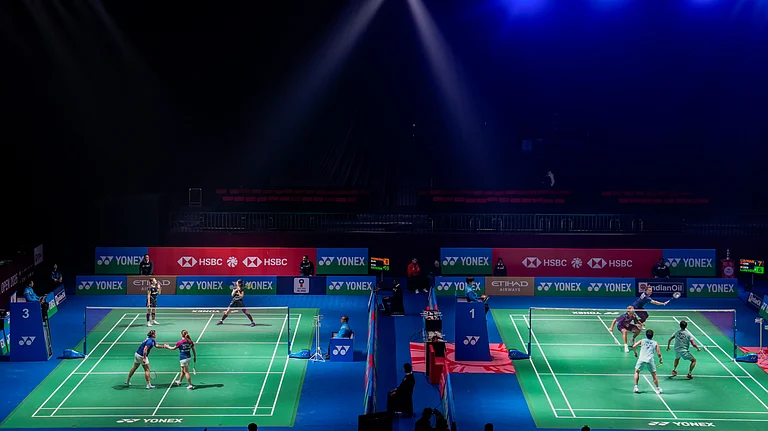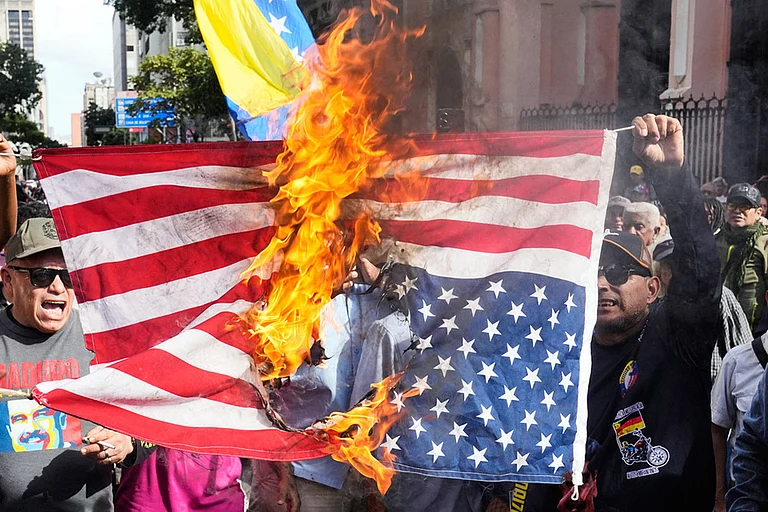Anand Teltumbde is a scholar and civil rights activist known for his extensive work on B.R. Ambedkar’s life and work as well as the caste issue. He was arrested in connection with the Elgar Parishad case in 2020 and released on bail in November 2022 after spending 31 months in jail. The 72-year-old spoke to Snigdhendu Bhattacharya
What new aspect of caste did you learn about during your days in jail?
There is nothing I learnt about the caste issue in jail which I did not know before. As a civil rights activist for the last four decades, I knew about the preponderance of Muslims, Dalits and Adivasis in jails, both as undertrials and convicts. Taloja was no different. As per the latest NCRB data, it is almost 51 per cent as against their share of 39 per cent in the population. It is not entirely attributable to the present regime that has made these communities its main target to consolidate its constituency. This feature has continued from the previous regime. It is our civilisational feature in terms of Fyodor Dostoevsky’s dictum: ‘‘The degree of civilisation in a society can be judged by entering its prisons.’’ The communal poison being spewed these days is not the cause but the effect of this civilisational feature.
Whether one looks at it from the prism of caste, community (religion), or class, the picture approximately remains the same. This fact poses an important question: Which among these categories should be a viable category to build a lasting peoples’ movement to better their future?
Prisons tend to bring forth the innate proclivities of people, both good and bad. The first encounter I had there with an inmate was with a question whether I was a Maratha. I was taken aback but took a shortcut by saying ‘hun’ (yes). I expected further probing about my sub-caste but fortunately, it stopped. It merely affirmed my observation that India is more casteised today than ever before.
Another thing I heard in the context of caste was the struggle of some Ambedkarite youths against discrimination. It manifested in the form of identity assertion (which I disapprove of) but the vehemence with which it was crushed by the administration was reflective of Brahminic arrogance. All involved in it were reportedly beaten by the guards. Suresh Gaikwad who led it was so mercilessly thrashed in Kalyan prison that he had to be brought on a stretcher. He continued his struggle and was again beaten and transferred to Thane jail. This happened when the IG Prisons himself was a Dalit. It once again proved my hypothesis that ‘reservations’ do not serve the purpose Ambedkar envisaged.
Do Dalits have their own hierarchies and how do they impact Dalit politics?
Dalits per se did not constitute a part of the varnashram system. But their segregation and simultaneous dependence on the Savarnas induced emulation of the same hierarchical structure for their own outcast society. Therefore, one finds its hazy mirror image in Dalit wadas of the caste society. They had their Brahmins, barbers, carpenters, etc. Hierarchy is the essence of caste and it infected all communities that were formed in the Indian subcontinent irrespective of the religion they followed.
If you take Maharashtra as the home for Dalit politics, you will clearly find the impact of Dalit castes firstly in the alienation of the non-Mahar Dalits (Mang, Chambhar, Dhor) during Ambedkar’s time and thereafter, its splintering as per the sub-castes of Mahars. Such was the force of the sub-caste conscience among Mahars that Babasaheb Ambedkar had to put in special efforts to unite them with methods like co-dining. It is said that the Republican Party of India (RPI), conceived by him as a non-Congress, non-Communist opposition party, split along the sub-castes of Mahars.
As one of the founders of the Dalit Panthers, J.V. Pawar, vouches in his book, this Mahar sub-caste had even surfaced during the Dalit Panther movement but it was curbed. It is not in Maharashtra alone; Dalit disunity, best represented by Mala-Madiga syndrome, is a reality everywhere, which is cynically used by the BJP-like parties in today’s politics. It also proves my hypothesis that using caste resources (notions, consciousness, idiom), caste will only be strengthened, never annihilated. You have to transcend caste and adopt an alternate category if you want to destroy it.
What is the scope for converging Dalit politics with Dravidian or Leftist politics—two ideological oppositions to Hindutva?
It is too late to speak about convergence in the era of poisonous polarisation. But on a positive note, I still hope for such a convergence, not as much with Dravidian politics but with class politics. To me, caste is a poison-ridden identity whose intrinsic property is to split like an amoeba; it can never be the basis of any convergence. The only hope of convergence is on the basis of class. My detractors would label me Marxist. While I don’t care for their labels, I would like to dispel their ignorance that class does not necessarily mean Marxism. You still have many degrees of freedom to carve out your politics depending upon your understanding of the extant forces. The problem is that class politics has never been tried enough in this country. The failure of it elsewhere is not a valid point for me. India could rid itself of this civilisational (caste) politics only through class-based mobilisation of people. That alone, according to me, can provide robust ideological opposition to the menacing movements like Hindutva.
The debate between constitutionalism and activism has impacted the Ambedkarite movement over the years. How relevant is it now?
It is no more important. It has long been overtaken by opportunism. It mainly cropped up in the initial debate within the Republican Party on the issue of what Ambedkarism is. One group held that constitutionalism was Ambedkarism to oppose the other that advocated struggle, which was denigrated by the former as Marxism. It split the RPI. Then it resurfaced during the Dalit Panthers, when Ambedkarism became Buddhism, castigating the protagonists of struggle as Marxists. It split the Dalit Panthers. The debate has died but Marxism became the scarecrow to opportunistically join any party, even the BJP.
Communists were late to realise the importance of caste. To what extent do you see them correcting their path?
It has been the single biggest folly of the Communists to ignore caste, not in terms of anti-caste struggle but in terms of their own class struggle. The conception of class itself could not be done excluding the reality of caste. It is my considered opinion that if they had conceived classes incorporating castes and strategised their class struggle so as to inhere struggles against castes, they would not have reached the sad state that they have. Even today, it can be tried though it may be a million times more difficult than it was a century ago when both the Dalit and Communist movements were born.
How can the Hindu nationalist attempts to appropriate Ambedkarbe thwarted? Hindutva also tries to incorporate Buddhism. How does that impact Ambedkarites?
Hindutva’s appropriation of Ambedkar is a tactical move for their electoral games. Ambedkar and Hindutva are antithetical. Hindutva forces hated Ambedkar until Deoras’s strategic revamp of the RSS in the early 1980s. They could have never succeeded in it if the so-called Ambedkarites had not reduced him to an inert icon. The 2024 general elections may mark the end of this bonhomie as thereafter the Hindutva forces may not have any more use of Ambedkar.
Appropriating Periyar might be a more difficult task for Hindu nationalists but can Dalit politics use Periyar beyond Tamil Nadu or the south?
Periyar is too pungent an anti-Brahminism icon to be misappropriated by the Hindu nationalists. But so was Ambedkar in so far as his opinions on Hindus, Hinduism and Hindutva are concerned. As I said, it is his self-proclaimed followers who helped his misappropriation. I, however, don’t think that this hero-centric approach would work to build resistance movements now onwards. A new assimilative class politics is the need of the future.
Can caste barriers ever disappear? If not, how should governments and civil society deal with them?
It’s pure idiocy to think that caste cannot be annihilated. Caste-like institutions have been a part of human history in many places across the globe and they have disappeared. Though in many ways India’s caste system acquired its uniqueness through its history and geography, and had become a self-organising, self-regulating system, it is not impossible to smash it. Its counterforce, however, cannot be constructed using its own resources, i.e, religion, culture, etc. but by harnessing the resources of modernity.
Do you have hope for the future?
Rationally speaking, seeing the way things are going, I do not see any hope for this country. Unbeknownst to many people, India has been already pushed back into the pre-medieval paradigm of Brahminism, using fascist methods. Given the fact that fascism was defeated only in the conditions of World War, and given the present neoliberal geopolitics, the task of recovering India’s own pristine self appears arduous.But I have an undying belief that there is always a solution to any problem. And if we construct our politics rooted in the peoples’ emancipation, and shun the temptation of playing the games of the ruling classes, it is possible to redeem not only India but also the world for humanity. The present morass is of our own making and we will have to clear it ourselves.
(This appeared in the print as 'It’s not impossible to smash the caste system')


























